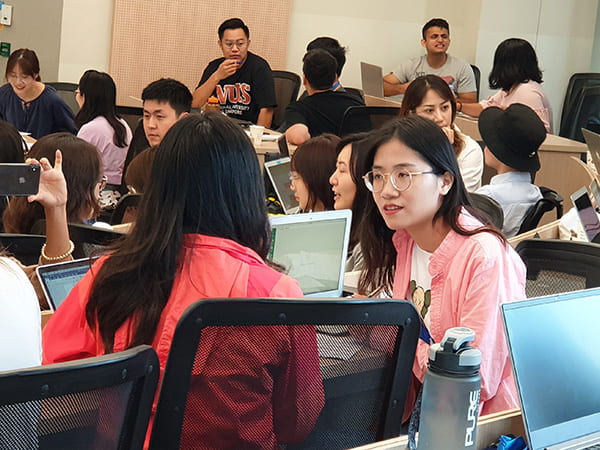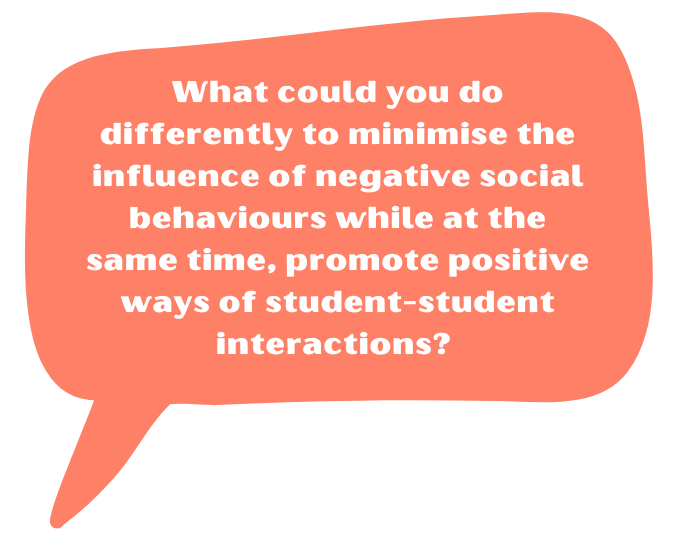Mark GAN
Centre for Development of Teaching & Learning (CDTL)
Peer assessment is a valuable tool for student learning, but it can be challenging to implement effectively. Mark provides five tips for overcoming common barriers, such as starting small, using collaborative tools, and providing feedback training.

Gan, M. J. S. (2023, 25 May). Using peer assessment as evidence of student learning. Teaching Connections. https://blog.nus.edu.sg/teachingconnections/2023/05/25/using-peer-assessment-as-evidence-of-student-learning/
When it comes to convincing colleagues to implement peer assessment and feedback in their courses, the common push-back or hesitant response is that students are not as comparable as teachers in being fair, reliable and accurate in the evaluation of their peer’s work. To make matters worse, students tend to collude, free ride, feel uncomfortable or anxious criticising others, be overzealous in criticism, lack confidence or simply doesn’t care. It seems that the time and effort to overcome these ‘barriers or pitfalls’ might just be too daunting for the unguided faculty to handle and likewise, creates unintended workload for the students as well. While I strongly believe in the positive impacts of peer assessment and feedback (for both assessor and assessee), I’m also aware that not all teachers are ready to concede their assessor roles and responsibilities to involve students in making judgement or grading. Before jumping head-on in getting your students to assess one another, as a start, I would urge colleagues to re-consider this question:
Start small
Consider ‘easing’ students into collaborative learning prior to more formal peer assessment processes. For example, introduce ‘Think-pair-share’ to get student dyads to provide reciprocal feedback to each other, before sharing as a whole class. Other collaborative learning strategies that can be readily adapted for in-class peer feedback exchanges: fishbowl, jigsaw, elevator pitch, and predict-observe-explain.
Use collaborative learning tools
Incorporate development of social and communication skills, negotiation, discussion and teamwork skills through the use of collaborative learning tools. For example, get students to work in groups to co-construct a concept map to propose different solutions to a complex problem.
Examples of other collaborative tools:
- Using Miro to Enhance Students’ Online Engagement and Learning in a Science Communication Module
- Assessment as Learning: Using PeerWise for collaborative online learning
Provide feedback training
Students need to learn how to give and accept criticism, justify one’s own position, and take on different perspectives. These knowledge and skills require time and effort to develop and should be taught as part of the curriculum. Some ways to start preparing students for peer feedback include:
- Reading and discussing an example piece of work first (use of exemplars)
- Discussing and clarifying the criteria to use as the basis for feedback (use of rubrics or checklists)
- Providing students with a feedback pro-forma (use of feedback form with prompts and guidelines) to help structure their feedback.
- Modeling or engaging students in role play to learn about the peer feedback processes
Encourage an open rather than closed questioning mindset
Good questioning skills are crucial in any peer learning situations and teachers should not assume that all students come to the work group ready to participate and interact actively with other members through higher-order questions. Having an open questioning mindset helps whereby you ask someone what they think and why they think the way they do. This is different to a closed questioning mindset which asks your peers to say what they think you want them to say, then take little interest in their reasoning.
Design ‘fit-for-purpose’ assessment
This is probably the most important aspect of any peer assessment – the design of assessment tasks that allow for formative peer feedback that helps students to learn better from one another. Such assessment tasks would require teachers to take into consideration the following:
- Be clear about the purpose of the assessment
- Provide clear instructions on how to exchange peer feedback
- Ensure the task promotes interdependence, is cognitively demanding, and aligned to intended learning outcomes
- Consider nested assessment tasks which allow students to make use of peer feedback in subsequent activities
Promote an effective collaborative learning environment
Besides having to set aside time for the training on peer assessment, teachers should also consider developing ways to enhance trust, positive relationships and respect amongst all students. For example:
- Design meaningful team roles that relate to the content and to the task, such as manager, monitor, and leaders for each subtask of the activity, which encourages students’ ownership in the process and allows richer interactions between members.
- Build in opportunities for metacognitive learning by having students evaluate their own feelings, behavior and effort.
- Engage students in a dialogue about the value of interdependence, identifying and leveraging on individual members’ strengths to build collective goals and shared understandings.
 |
Mark GAN is an Associate Director of the Centre for Development of Teaching and Learning (CDTL) in NUS. He has been involved in a wide variety of higher educational initiatives and programmes to enhance professional development of staff, such as courses for developing a Teaching Portfolio and writing of teaching inquiry grants. His research interests include feedback and assessment, and the impact of academic development work on teaching and learning. Mark has a PhD in Education from the University of Auckland, supervised by Professor John Hattie. Mark can be reached at mark.gan@nus.edu.sg. |


